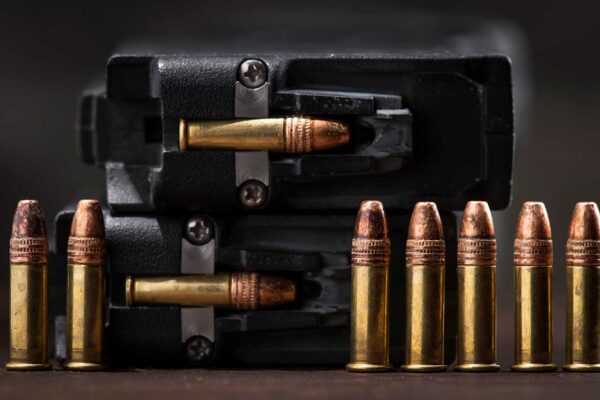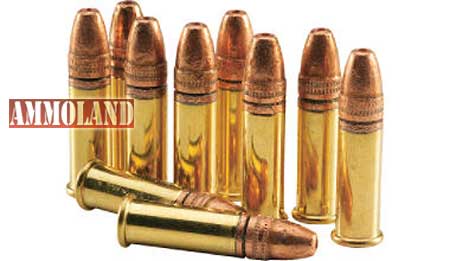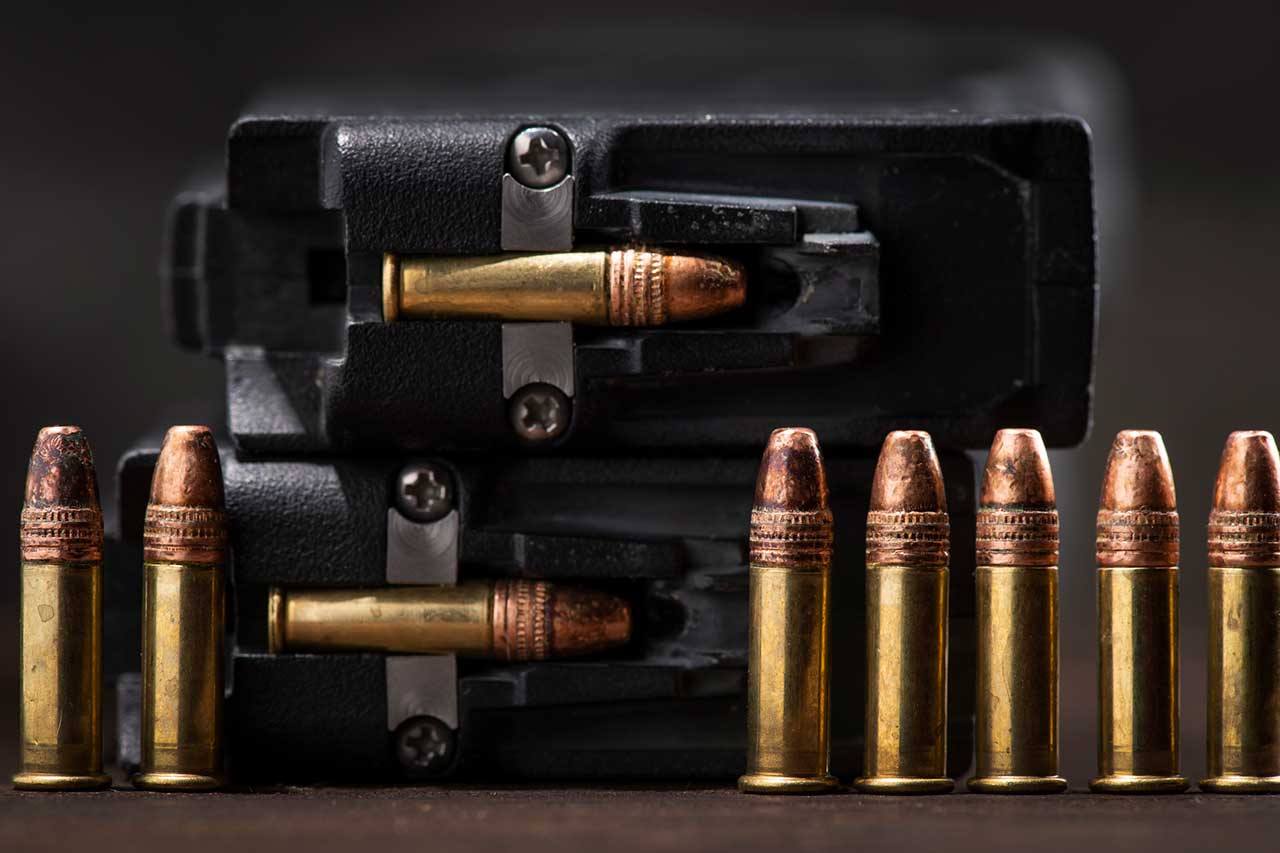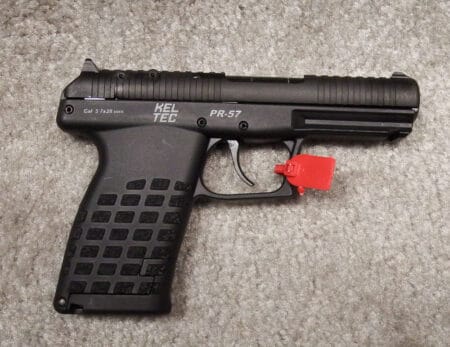
U.S.A. –-(AmmoLand.com)-— At what velocity does a .22 bullet traveling through the air start producing a miniature sonic boom?
In a recent discussion online, people who have studied the effect noted aircraft start to encounter related turbulence effects long before they reach the speed of sound. In addition, the speed of sound in air varies with the temperature of the air. Thirdly, any lot of ammunition produces a range of velocities. It is exceptional ammunition in which the range from the average to the maximum is less than 25 feet per second (fps).
It is not uncommon for .22 LR ammunition to have a maximum velocity of 50 fps above the average for 50 shots.
Part of the theory of a transonic zone is that the production of a supersonic shock wave is not an instantaneous event, as a projectile breaks the speed of sound. Turbulence starts producing supersonic effects before a projectile exceeds the speed of sound. Turbulence creates a distribution of waves, some of which are supersonic shock waves, even though the projectile is traveling below the speed of sound.
It was suggested, to avoid the distinctive noise of a “sonic crack” while shooting a .22 fitted with a suppressor, the average speed of .22 ammunition should be less than 1,000 fps.
The experience of this correspondent has been: when a suppressor is being used, the noise of a sonic crack is easily discerned from a subsonic muzzle blast.
This correspondent has available:
- a reasonably good chronograph,
- .22 ammunition which has demonstrated velocity distributions on both sides of the speed of sound
- and suppressors.
A simple experimental procedure was developed. Shoot 25 rounds of the ammunition through a rifle with a good suppressor.
Record the velocity & subjective properties of the sound associated with each shot, for later analysis.

To make the sonic crack more detectable, the experiment was conducted on a calm day. Large flat surfaces were only a few yards away to facilitate reflection of sound and to magnify small sonic booms in the ears of the shooter. The temperature was 72 degrees Fahrenheit.
While an instrument was used to measure the velocity, the human ear was used to characterize the sound of the shot. The use of a suppressor is critical. Suppressors significantly diffuse and reduce the muzzle blast. Most of the noise produced by a shot is either from the muzzle blast or from the sonic crack produced by the bullet. Without a suppressor, gases produced by a shot may leave the muzzle at supersonic velocities. With a suppressor, the two sounds are fairly distinctive. The muzzle blast is more spread out and diffuse; the sonic crack is a sharper, distinct sound. This makes detection of the sonic crack easier, as it becomes the major component of the noise of the shot.
25 shots were fired, the velocity of each shot measured, and notes were taken on the character of the noise of the shot. Here are the results. There were three clear groupings. Velocities were measured in feet per second:
Group 1, no detectable sonic crack. Velocities of individual shots:
1031, 1036, 1047, 1053, 1058, 1058, 1065, 1071, 1085, 1085, 1092
Group 2, some increase in sound, where a sonic crack was thought to be detected. The effects were much less than the diffuse muzzle blast. Velocities of individual shots:
1095 – hint of increase, 1099 – slight increase, 1101 – hint of snap, 1102 – hint of increase, 1109 – slightly louder, 1109 slightly louder, 1109 – hint of increase.
Group 3, sonic crack clearly detected. Velocities of individual shots:
1114 – yes, 1117 – yes, 1123 – yes, 1126 – yes, 1151 – yes.
The transonic zone effect for .22 LR is real and detectable.
One obvious finding was the effect becomes more significant the closer to the speed of sound the projectile is traveling. From 35 fps below the speed of sound to 21 fps below the speed of sound, the sonic crack was detectable, but the magnitude was much less than the sound of the already low muzzle blast. From 16 fps below the speed of sound on up, the sonic crack became the dominant sound of the shot from a suppressed .22 rifle. The sound level increased as the speed of sound was approached. The shot at 1151 fps was noticeably louder than the shot at 1126 fps.
At 72 degrees, the speed of sound is within 1-3 fps of 1130 fps. Inside the atmosphere, where humans are comfortable without oxygen gear, pressure has no serious effect on the speed of sound. Humidity has a small effect, accounting for the 1-3 fps variation at sea level and room temperature. Above 20,000 feet, the effect of humidity can double to as much as 7 – 8 fps. Temperature causes much larger variations. The higher the temperature, the greater the speed of sound. At 100 degrees F, the speed of sound is 1158 fps. At 70 degrees, it is 1128 fps. At freezing (32 F) it is 1087 fps. At 40 degrees below zero (both Fahrenheit and Celcius), it is 1004 fps.
The measurements of this quick experiment indicate, for .22 ammunition, if the velocity is kept more than 35 fps below the speed of sound, transonic effects will be difficult to detect. Up to 21 fps below the speed of sound, the effects will be small.
To avoid noise created by transonic effects:
If the temperature is above freezing, the velocity of .22 LR bullets should be kept at 21 fps below the speed of sound, or 1087 – 21 = 1066 fps.
If the ammunition demonstrates a max velocity of 50 fps above the average, the average velocity needs to be 50 fps less, or 1016. If the maximum for the ammunition lot is only 30 fps above the average, then the average could be 1036.
The obvious solution, as suggested in the online discussion, when sound effects are critical is: Keep the average velocity below 1000 fps, and use ammunition which is consistent.
For most shooters, an occasional low-level sonic crack will not produce significant effects.
This experiment is simple and easy to do. If the shooter has access to an indoor range, the speed of sound effects should be even easier to detect.
In the spirit of scientific inquiry, this correspondent welcomes all efforts to duplicate these results. A chronograph, a .22 with a suppressor, and a quiet place to conduct the experiment are needed.
An obvious improvement would be to use someone with excellent hearing to determine sound variations. Please contact AmmoLand News with your results. Good record-keeping is essential in a scientific endeavor.
Examples of Products Used in this Experiment:
- 22LR Rimfire Ammunition
- Caldwell Ballistic Precision Chronograph Premium Kit
- Silencerco Harvester EVO Multi Caliber Suppressor
About Dean Weingarten:
Dean Weingarten has been a peace officer, a military officer, was on the University of Wisconsin Pistol Team for four years, and was first certified to teach firearms safety in 1973. He taught the Arizona concealed carry course for fifteen years until the goal of Constitutional Carry was attained. He has degrees in meteorology and mining engineering and retired from the Department of Defense after a 30-year career in Army Research, Development, Testing, and Evaluation.









yeah! and the next thing you know, we will have to have separate specially marked boxes for trans ammunition.. lol JK I couldn’t resist.
You said – “25 shots were fired, the velocity of each shot measured, and notes were taken on the character of the noise of the shot.”
It is important that the character of the noise is judged and recorded before the person is aware of the velocity of the shot. You didn’t note the order of these events but in no circumstance should the noise evaluator know the velocity before judging the noise and recording the notes.
If he knows the velocity he is no longer an impartial observer.
No instrument, other than the human ear, was used to measure the sound effects.
One thing that needs pointing out is most .22LR is round nose. Round nose does not transition to supersonic very well as the shock wave is not divided equally or to be more explicative, not aerodynamically sound when reaching the compressibility realm or transonic region. This causes the bullet to start buffeting and go unstable. If you note high power bullets are almost always pointed nose which will split the shockwave equally resulting in a more stable transition to supersonic. The boom or crack you hear is when the air being split at the front of the bullet does not… Read more »
As confirmation of this, observe this testing of subsonic rounds in the cold and snow:
https://youtu.be/G1-gnj0CMms?t=1185
The temperature, barometric pressure, and dewpoint(and likely other factors too) all effect the speed of sound.
If you watch a few more groups past the cued up one, there are some shots that go supersonic while others with the same loads do not. Whether it was due to differing velocity from shot to shot, or changing air conditions, is anybody’s guess, but it’s evidence that this does happen.